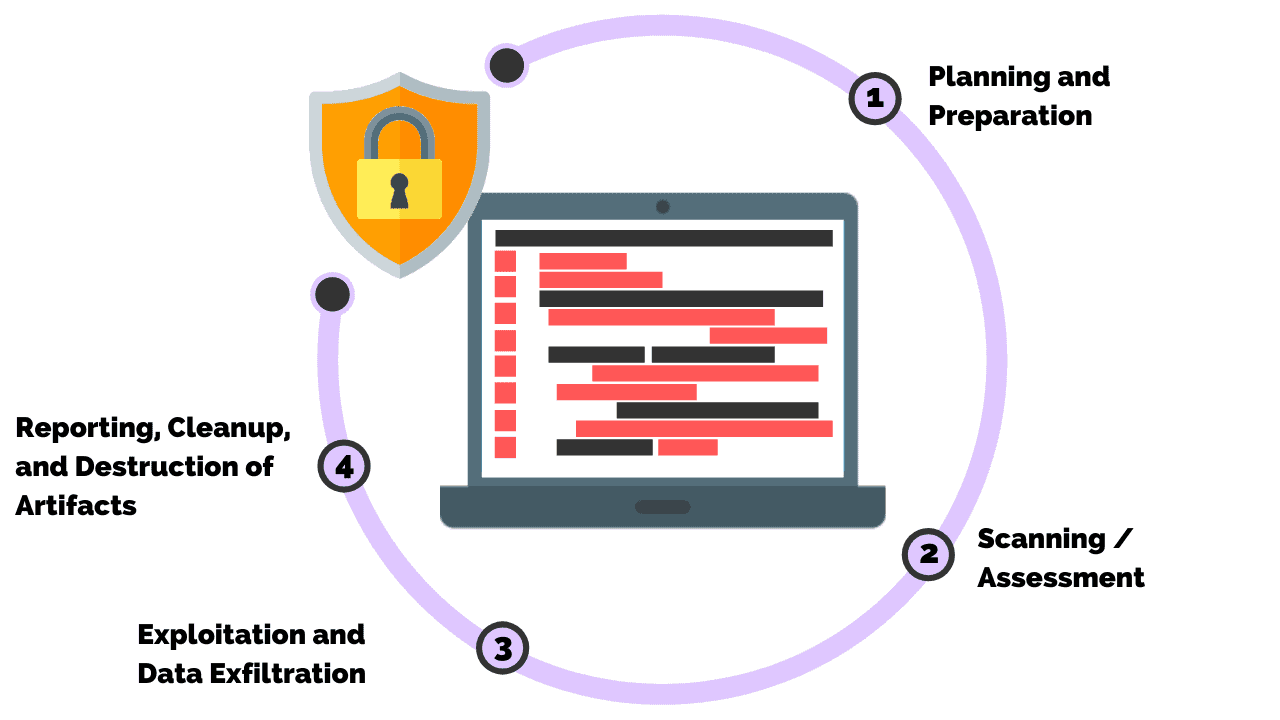Introduction
In today’s digital age, safeguarding sensitive data and ensuring the security of information systems is paramount for organizations. Cyber threats continue to evolve, making it crucial for businesses to assess and fortify their security measures proactively. Penetration testing, commonly known as pen testing, is an indispensable tool in this endeavor. However, it’s not enough to conduct these tests; an effective penetration test report is equally essential. In this article, we’ll explore the significance of a penetration test report template and its key components.
1. Title Page
The title page serves as the first impression of your report, providing an overview of its contents and relevant organizational details. Typically, it includes the following information:
- Report title and date
- Client or organization name
- Contact information for the report’s authors (Ex: HalilDeniz)
2. Executive Summary
The executive summary section encapsulates the main findings of the penetration test and outlines recommended actions. In this section, you should include:
- Overall risk assessment and highlighting of vulnerabilities
- Recommended remediation measures
3. Introduction
The introduction section sets the stage for the report, defining its purpose and scope. Here, you should provide details such as:
- The objective of the penetration test
- Scope of the test
- Dates and duration of the test
- Descriptions of systems or applications tested
4. Methodology
This section elucidates the methods and tools employed during the penetration test. It offers transparency into how the test was conducted. It includes:
- Description of the penetration testing methodology
- Tools and techniques used (Ex: DnsWatch)
- Testing approach and procedures
5. Findings
The findings section is the heart of the report, presenting discovered vulnerabilities, weaknesses, and associated risks. Each finding should include:
- A detailed description of the vulnerability or weakness
- Its significance and potential impact
- Severity rating (e.g., low, medium, high)
- Supporting evidence (logs, screenshots, etc.)
6. Recommendations for Remediation
In this section, provide recommendations for addressing the identified vulnerabilities and enhancing overall security. Recommendations should include:
- Detailed steps to remediate vulnerabilities
- Prioritization of remediation efforts
- Guidance on tracking the improvement process
7. Conclusion
The conclusion section summarizes the overall results of the penetration test and offers insights into the organization’s security posture. Key security concerns are reiterated.
8. Appendices
Appendices, if included, provide additional details, technical information, or expanded explanations of test results.
Final Thoughts
A well-structured penetration test report template is a valuable asset for organizations seeking to bolster their cybersecurity. It ensures that findings are comprehensible and actionable, providing guidance to address vulnerabilities effectively. Remember that every penetration test may differ, so customize the report template to meet specific requirements and the organization’s needs.
By adhering to a well-structured report template, organizations can strengthen their security posture, protect sensitive data, and safeguard their digital assets in an ever-evolving threat landscape.

